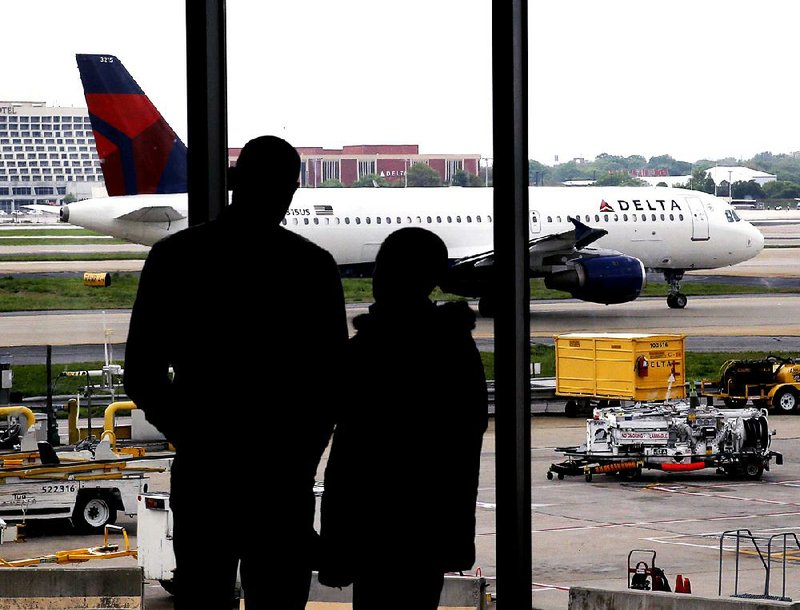After years of steadily rising airfare, travelers this summer can expect a tiny bit of relief -- $2.01 in savings to be exact.
The average round-trip domestic ticket this summer, including taxes, now stands at $454, down less than a percent from last summer. Vacationers to Europe will fare better with the average ticket down 3 percent to $1,619, about $50 less than last summer.
The generally good news about fares came in a report released Monday by the Airlines Reporting Corp., which processes ticket transactions for airlines and travel agencies such as Expedia, American Express and Carlson Wagonlit. The study looks at 4.1 million tickets purchased before March 31 this year and last year for travel between Memorial Day and Labor Day.
Not all travelers will see lower fares.
Flights to Hawaii, Florida and New Orleans are cheaper, but travelers heading to New York, Denver and San Francisco can expect to pay more.
Even in Europe, it depends on the destination. Overall fares are down, but it will cost more this summer to fly to Amsterdam; London; Budapest, Hungary; Lisbon, Portugal; Frankfurt, Germany; or Reykjavik, Iceland.
Airlines are now saving billions of dollars because of lower fuel prices and because more seats have been crammed into planes, spreading out costs over more passengers. European economic troubles are also keeping some seats empty as business travelers stay home.
Airfare during the first three months of this year was lower, down 3.7 percent domestically and 8.9 percent internationally.
Even with the moderate relief this summer, prices are still higher than just a few years ago. The average domestic round-trip ticket is $13, or 3 percent, higher than it was in 2012. European trips are $60, or 3.9 percent, more expensive.
Travelers can partially thank lower oil prices for keeping this summer's airfare in check.
Airlines at the start of the year paid $2.13 for each gallon of jet fuel, down 30 percent from last year's $3.03, according to the federal Bureau of Transportation Statistics. With U.S. airlines burning through 42 million gallons of fuel a day, that 90-cent savings adds up quickly: $14.7 billion for the entire year if prices remain at these levels.
Travelers are seeing only a sliver of those savings. The rest of the money is being used to upgrade airplanes and airports, pay employee bonuses and reward shareholders as airlines continue to post record profits.
European economic woes are also keeping some business travelers home, helping lower fares for vacationers. Fares are down to airports in Spain, Italy and France. However, cities in Germany and England, whose economies are stronger, are still higher this summer compared with last year.
Part of the savings is also linked to airlines adding extra seats on certain routes.
Some of the best bargains are flights to Hawaii.
There are 5 percent more seats between Hawaii and the rest of the country this summer compared with last. That's helping to lower ticket prices to most airports there by about 10 percent.
The same situation is true for flights to Europe right now between New York and Milan, Italy. That's because four airlines fly that traditional business route nonstop each day including Dubai-based Emirates Airline. Starting in June, Emirates will fly the world's largest jet, the Airbus A380, carrying 489 people between the two cities. That's 129 more passengers a day than it currently carries, helping to bring down prices.
In a letter Friday, the chief executives of Delta, American and United airlines claimed that Persian Gulf carriers such as Emirates are "rushing" to add new flights to the U.S. ahead of possible restrictions in a dispute over whether they are unfairly subsidized.
The additional services emphasize the need for a freeze on the Persian Gulf carriers' expansion until a resolution of the disagreement is reached, the U.S. airlines said in the letter to the U.S. government. They also called for full disclosure of the Gulf carriers' financial statements, as well as those of any government-owned entities that may provide goods and services at discounted prices.
The Obama administration is reviewing whether Emirates, Qatar Airways Ltd. and Etihad Airways are receiving unfair support from their governments, making it difficult for U.S. airlines to compete. The public-comment period runs through May, and the Gulf carriers are using that time to expand service, the U.S. airlines said.
"It is now apparent that the Gulf carriers are taking advantage of this delay to change the facts on the ground, rushing to add new wide-body service in an attempt to gain even more market share before the U.S. government acts to counter their subsidized expansion," American Chief Executive Officer Doug Parker, Delta chief Richard Anderson and United Chief Executive Officer Jeff Smisek said in the letter.
Representatives from Qatar and Etihad did not immediately return calls seeking comment on the U.S. airlines' letter. Emirates did not immediately respond to a request for comment.
Danny Sebright, president of the U.S.-U.A.E. Business Council, a trade association, said most of the Gulf airlines' routes to the U.S. have been in the planning stages for years and have been delayed only by an inability to get enough aircraft.
Information for this article was contributed by Scott Mayerowitz of The Associated Press and by Michael Sasso and Mary Schlangenstein of Bloomberg News.
A Section on 04/21/2015
